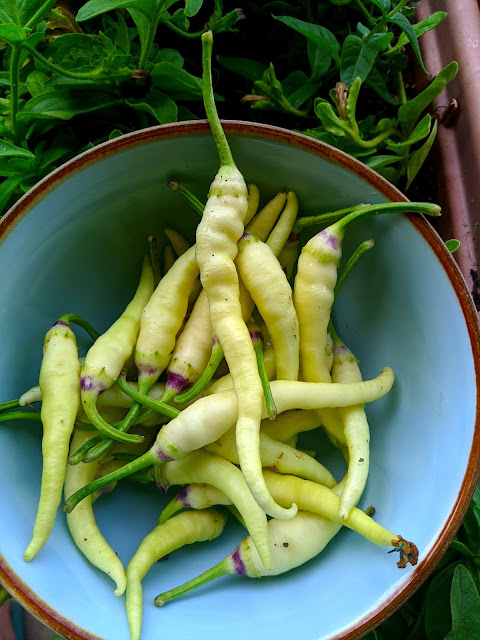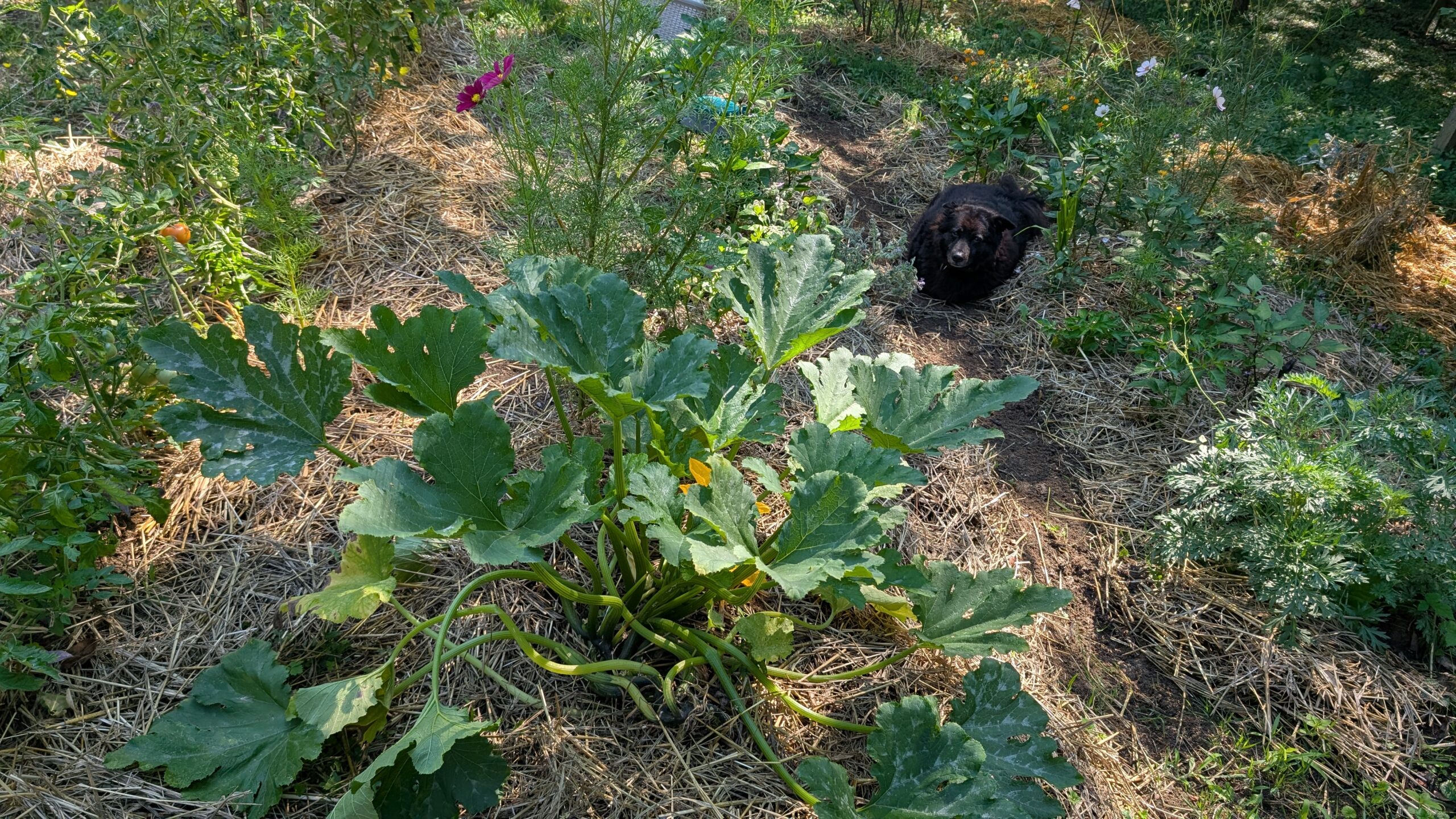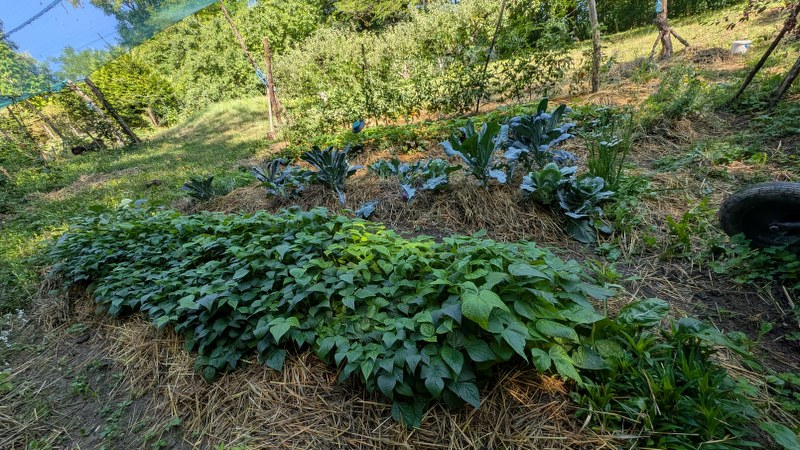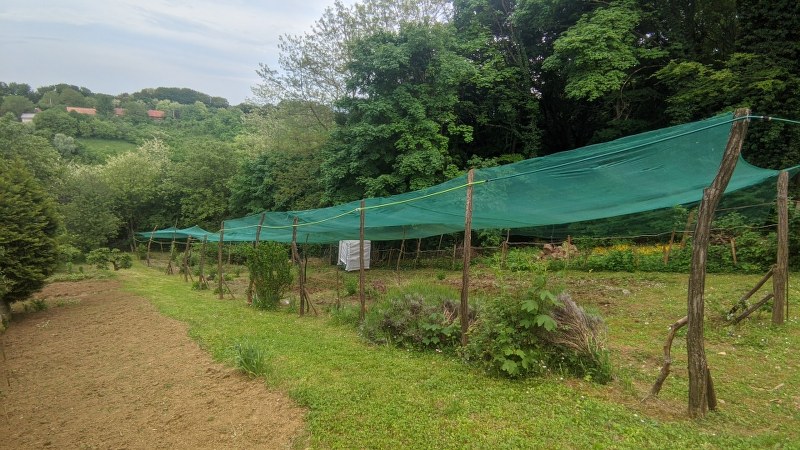When you ask for a “feferon” or fefferoni in Balkans you’ll get the same thing in all of the countries- a small, finger-sized, mild to hot yellow or red pepper which will usually be served as pickled or in some rare cases dried/powdered. This pepper is not quite like sweet peppers and not quite chilli pepper. It’s a fefferon pepper.
The closest description of the pepper is similar to cayenne pepper, but with a tiny difference. Fefferoni doesn’t form a bush. This pepper grows like a normal sweet pepper, only the fruits are much smaller and hot. Depending on the variety they can be sweet, mildly hot, or hot, but they will never be as hot as some of the hottest peppers. They are usually eaten as pickled pepper and in combination with vinegar, they can be very hot. So hot that only a couple peppers will be enough to sting on their way in and out. The taste of the hotties ones can be similar to eating large quantities of black pepper.
When it comes to varieties it’s difficult to say the names of the varieties because of the rule here that every older household has its own “feferon”. Usually, seeds are saved through generations and gifted to neighbors. We buy seedlings by their taste. If we want sweet ones we buy “statki feferon” and if we want spicy ones we ask for “ljuti feferon”.
Fefferoni peppers are a part of the heritage and only fefferoni peppers are called “feferon” here. Other chilly peppers, including Cayenne varieties, are called “ljute paprike” (chilli peppers) and are never mixed with fefferoni peppers.
Fefferoni peppers are usually yellow. Some new varieties are green and turning red, but most old fefferoni varieties have a very special yellow color. They will turn yellow as soon as they start growing and they will stay yellow all the way. Some varieties can turn orange and red in the end but we never wait for them to ripe. Also, old varieties had one unwritten rule. If the variety was hot the fruit would stand upwards and if the fefferoni was sweet the fruit would hang from the plant, but nowadays this is not a rule anymore. Although some of the old people still claim the hotness of their peppers can be seen by the fruit direction.
Fefferoni peppers are harvested as soon as they reach the desired size. Actually frequent harvests are encouraged to make the plant produce more flowers and eventually more peppers. If the weather conditions are good fefferoni peppers can be harvested almost as frequently as cucumbers.
The secret of such frequent harvests is in the fact that even the smallest fefferoni pepper has almost identical hotness as the fully ripe one. Only completely red ones can be a bit hotter, but the difference is so subtle that there is no point in leaving the peppers to turn red.
The problem with fefferoni peppers is that they form small bushes, and this means that they are more sensitive to weather conditions. A smaller plant means smaller roots and fewer leaves so it can burn in the sun more easily than some other peppers. That’s why fefferoni peppers can’t be grown without some kind of protection. Usually, they are covered with mulch foil, dried mulch, or planted between bigger plants to give them shade. Also since the plants are much smaller they are more delicate and are always harvested by hands. The machines would break the delicate branches and damage the plant.
Like I said before fefferoni peppers are mostly eaten as pickled peppers, or if left to fully ripe dried and used as powdered pepper. But if you ask a host for a fefferoni pepper you’ll get a jar with pickled fefferoni.
This year I’ve planted 80 seedlings of fefferoni peppers to have enough for pickling. My hubby adores them and he eats a couple of jars of peppers a month so I need lots of them. When it comes to variety, honestly, I have no idea which variety they are. The family farm from which I’ve bought my seedlings said that it’s “domaći feferon” meaning they have their own seeds that are passed from generation to generation and the name of the variety has been lost in the process. But, the name “domaći”(homemade) is enough for us.
I’ve started harvesting my fefferoni peppers past week and in 7 days I already harvested the same seedlings twice. Not all of the seedlings have started producing fruity yet, but the ones that did are producing continuously and give fruits every 3-4 days.
Harvested peppers can be left in the refrigerator for almost a month, the only thing we need to do is to cover the top of the container with a plastic foil, or keep them in a container with a lid. This is great because we can eventually fill more jars and do more pickled jars at once instead of making one each couple of days.
I use the same recipe for my pickled fefferoni as I use for pickled pepper and cucumbers. The only difference is that in pickled peppers I add black pepper, in cucumbers I add dill flowers, and fefferoni peppers only get a mixture of water, vinegar salt, and sugar without any additional spices or plants. There’s no need for anything more. The tase of the fefferon pepper is enough.
If visiting any Balkans country be sure to ask for fefferoni peppers, it’s an experience you need to try because fefferoni are not a chilli pepper…it’s much more. It’s a fefferoni.











Leave a Reply